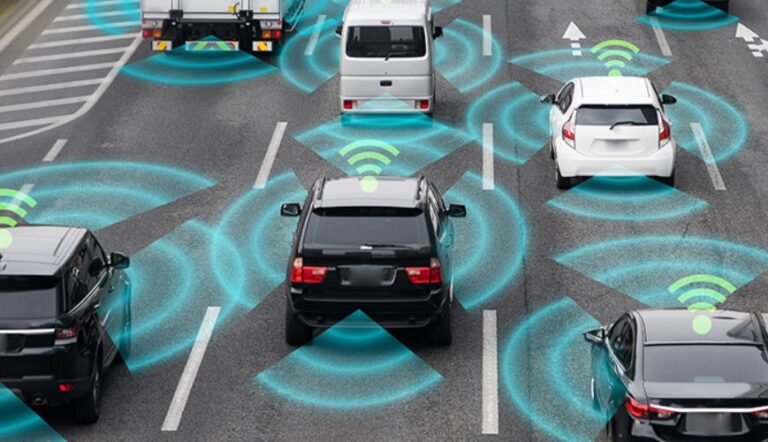AI Detectors: The Technology Behind Detecting AI-Generated Content
Introduction
With the rise of artificial intelligence (AI) in almost every field, from creative writing to marketing, the demand for best AI detector has never been higher. As AI models like GPT-4 and similar systems continue to improve in generating human-like content, distinguishing between machine and human-generated work has become more complex. This article will delve into what AI detectors are, how they function, their importance, and the challenges they face in the fast-evolving AI landscape.
What is an AI Detector?
An AI detector is a tool or software designed to determine whether a given piece of content—be it text, image, or even audio—was generated by artificial intelligence. These detectors are crucial as AI technology becomes more sophisticated, blurring the line between human and AI-created material. As AI-generated content becomes ubiquitous in writing, entertainment, and even social media, the need to verify the origin of this content is paramount.
How Do AI Detectors Work?
AI detectors use several advanced techniques to distinguish machine-generated content from human-produced work. Here’s how they operate:
1. Pattern Recognition
AI models, regardless of how advanced, often have identifiable patterns that distinguish them from human writers. Whether it’s repetitive phrasing, odd sentence structures, or overuse of certain keywords, AI detectors analyze these patterns. The detectors use machine learning models trained on both human and AI-generated data to pick out these inconsistencies.
2. Textual Analysis
One common method AI detectors use is textual analysis. This involves analyzing word usage, sentence structure, and grammar. AI-generated content can sometimes appear “too perfect,” with little variance in sentence lengths or a lack of complex, nuanced language. AI detectors scan the content for these tell-tale signs of machine generation.
3. Statistical Comparison
AI detectors can compare the statistics of a piece of text to human-written content. For example, humans tend to use irregular sentence lengths, natural breaks, and emotional nuance, while AI-generated text may appear more formulaic or “robotic.” Detectors assess things like word frequency and distribution to detect whether content was created by AI.
4. Context and Coherence
AI detectors also examine the coherence of the text. While AI models can generate plausible text, they often struggle with maintaining deep contextual understanding throughout long-form content. AI detectors identify logical inconsistencies, abrupt shifts in the flow of information, or generalizations that may suggest the content was machine-generated.
Why Are AI Detectors Important?
As AI continues to evolve and generate more realistic content, the role of AI detectors becomes increasingly important. Here’s why:
1. Ensuring Authenticity
With the rise of AI-generated text, images, and videos, it’s vital to distinguish between what was created by humans and what was created by machines. This is especially important for industries like journalism, academia, and marketing, where authenticity is crucial.
2. Preventing Misinformation
AI has the potential to generate convincing but false information. In the wrong hands, AI models can be used to create fake news, social media posts, or even reviews that can mislead the public. AI detectors help to minimize the spread of misinformation by flagging content that was generated by machines and scrutinizing it for factual accuracy.
3. Maintaining Academic Integrity
As AI writing tools become more widely available, educational institutions are using AI detectors to ensure students submit original, human-written content. AI detectors are being integrated into plagiarism checkers to identify not only copied work but also AI-generated content that might be passed off as a student’s own.
4. Detecting Deep Fakes
AI-generated content isn’t limited to text. AI is also capable of creating deep fakes, which are hyper-realistic fake videos or audio clips of real people. AI detectors can analyze pixel patterns or voice modulations to determine whether an image, video, or audio file was manipulated using AI technology. This is critical in preventing identity fraud, false media, or even political manipulation. detector de ia
Challenges of AI Detection
While AI detectors are essential tools in today’s digital world, they do face significant challenges.
1. Rapid AI Evolution
AI models are evolving at a rapid pace. As developers create more sophisticated AI models, it becomes harder for detectors to keep up. For instance, advanced models like GPT-4 generate text that closely mimics human writing patterns, making it more challenging for detectors to distinguish AI-generated content. This constant evolution requires continuous updates and retraining of AI detectors to remain effective.
2. False Positives
Another issue is the occurrence of false positives—when a detector mistakenly identifies human-written content as AI-generated. This can happen when a human writer’s style is too formal or repetitive, mirroring the characteristics of AI-generated content. False positives can cause problems in academic, professional, and creative fields where authenticity is vital.
3. Difficulty Detecting Hybrid Content
Sometimes, content is partially written by a human and partially by an AI, which makes detection difficult. If a writer uses AI to draft sections of a document and then manually edits it, detectors may struggle to identify the blended nature of the content. As AI assistance becomes more integrated into human workflows, distinguishing between AI and human contributions will become even more complex.
4. Ethical Concerns
While AI detectors aim to preserve integrity, there are ethical concerns about their use. For example, in creative writing or marketing, using AI to assist with content creation is becoming more accepted. In these contexts, flagging all AI-generated content might undermine creative processes or create unnecessary barriers to innovation.
Conclusion
As AI continues to shape the future of content creation, AI detectors play an essential role in preserving authenticity, preventing misinformation, and ensuring integrity in various industries. While these detectors face challenges in keeping up with the rapid evolution of AI technology, they remain crucial tools in maintaining transparency and trust in an increasingly AI-driven world.
For More Related Article: click here






